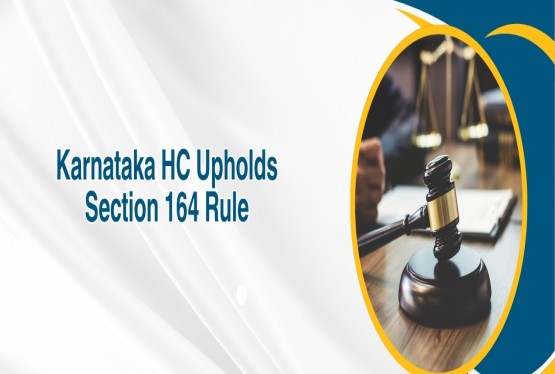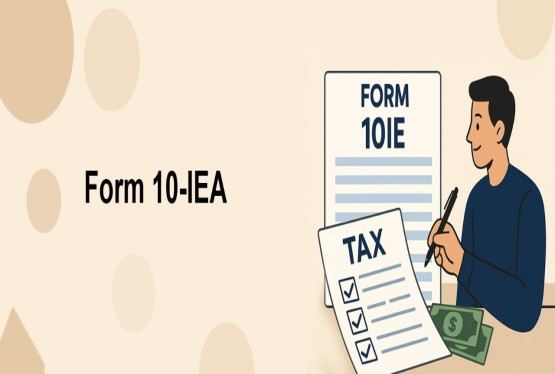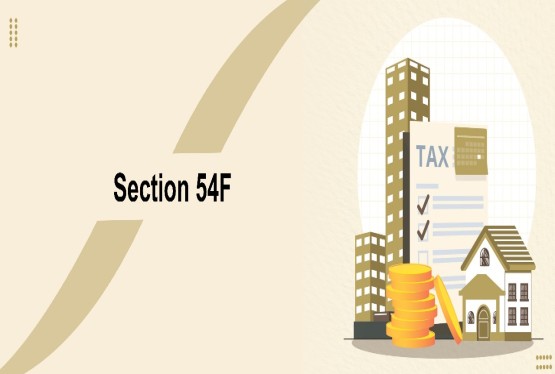The Income Tax Act, 1961, is the foundational statute that governs the direct taxation system in India. It includes a variety of provisions that define income types, set tax rates, allow deductions, and describe processes for tax assessment and recovery. One of the most important parts of the Act is Section 2, which contains definitions for terms used throughout the statute. These definitions are essential as they determine how the provisions of the Act will be interpreted and implemented. Among these is Section 2(26B) in The Income Tax Act, 1961, which specifically defines the term "infrastructure capital fund."
What is Section 2(26B) in The Income Tax Act, 1961?
Section 2(26B) in The Income Tax Act, 1961, provides a specific definition of the term "infrastructure capital fund." This definition is important because it establishes the legal identity of a particular kind of investment fund that is created to mobilize financial resources for infrastructure development in India. This term is relevant for tax assessment, compliance, and eligibility for tax incentives under the Act.
An infrastructure capital fund, as defined under Section 2(26B), must operate under a registered trust deed, and it should aim to raise money for long-term investments. These investments are required to be directed towards specific sectors that contribute significantly to India’s economic growth, such as roads, highways, power, and housing projects. This section helps in identifying such funds for granting them preferential tax treatment and for ensuring that tax benefits are properly targeted.
Key Components of Infrastructure Capital Fund under Section 2(26B)
The following are the main components of Infrastructure Capital Fund under Section 2 (26B) of the Income Tax Act:
Operated under a Registered Trust Deed
As per the definition, an infrastructure capital fund must operate under a trust deed that is registered under the Registration Act, 1908. This means the fund must be legally recognized and documented through proper channels, which adds transparency and ensures that the fund operates under lawful regulations. Registering under the 1908 Act helps ensure the legality and accountability of such funds.
This requirement also implies that informal or unregistered trusts will not qualify under Section 2(26B), thereby avoiding misuse and maintaining the credibility of funds aiming to attract public and institutional investment for infrastructure projects.
Purpose of Raising Money for Investment
The core objective of an infrastructure capital fund, as laid out in Section 2(26B) in The Income Tax Act, 1961, is to raise funds for investment. The trustees of the fund are responsible for gathering capital from investors and using that money to either acquire equity shares or provide long-term loans. This ensures that the fund is actively involved in financing projects over an extended period, rather than merely making short-term speculative investments.
The emphasis on long-term finance further supports the nature of infrastructure projects, which typically require significant time to develop and generate returns. This structured form of finance plays a critical role in completing such large-scale projects.
Investment in Specific Eligible Projects
Section 2(26B) provides further detail on where the fund must invest its money. It mandates that the capital raised must be invested in enterprises or undertakings that are engaged in specific types of activities. These include:
-
Infrastructure development projects under Section 80-IA(4): These typically include the development, maintenance, and operation of roads, bridges, highways, water supply systems, and other public utility infrastructure.
-
Special Economic Zones (SEZs) under Section 80-IAB(1): These zones are industrial or service-oriented zones with special economic regulations that differ from other areas in the same country.
-
Housing projects under Section 80-IB(10): These refer to residential housing projects approved by competent authorities, which meet certain conditions, including size and location.
-
Three-star or higher category hotels under Section 80-IB(2): Investment in hospitality infrastructure, particularly in hotels with three-star or higher ratings, also qualifies under this definition.
These targeted investments help ensure that funds flow into sectors that need long-term capital support for national development.
Purpose of Section 2(26B) in The Income Tax Act, 1961
The purpose of including the definition of "infrastructure capital fund" in Section 2(26B) in The Income Tax Act, 1961, is to provide clarity and facilitate better implementation of tax provisions. Here are some of the key reasons for the inclusion of this definition:
Legal Clarity and Interpretation
The definition helps in maintaining a consistent interpretation of the term "infrastructure capital fund" across different sections of the Act. This eliminates ambiguity, thus making it easier for tax authorities, fund managers, and investors to understand the legal position and act accordingly.
Enabling Tax Benefits
Various sections of the Act, such as Sections 80-IA, 80-IAB, and 80-IB, provide tax benefits for certain infrastructure projects. To access these benefits, the investment fund must qualify as an infrastructure capital fund. Without a clear definition, it would be difficult to determine eligibility, leading to potential disputes and confusion.
Promoting Investments in Key Sectors
By recognizing infrastructure capital funds and linking them to tax incentives, the government creates a favourable environment for investment in sectors critical to national development. It becomes easier for project developers to raise capital and for investors to channel their money into socially beneficial projects.
Ensuring Regulatory Compliance
The definition also serves to ensure that only properly constituted and lawfully operated funds can qualify as infrastructure capital funds. This helps maintain financial discipline and regulatory oversight, reducing the possibility of misuse.
Who is Affected by Section 2(26B) in The Income Tax Act, 1961?
The impact of Section 2(26B) in The Income Tax Act, 1961, extends to several key stakeholders in the infrastructure and investment ecosystem:
Fund Managers and Trustees
Fund managers and trustees who want to register their funds as infrastructure capital funds must comply with all the criteria mentioned in Section 2(26B). This includes registering the trust deed, ensuring investment objectives align with infrastructure development, and maintaining transparency.
Investors
Investors in such funds may be entitled to specific tax advantages, depending on the provisions in other sections of the Income Tax Act. For this reason, it is important for investors to verify whether the fund meets the criteria outlined in Section 2(26B) before committing their capital.
Infrastructure Developers
Infrastructure developers benefit indirectly through the availability of such funds. By attracting investment from infrastructure capital funds, developers can secure long-term, stable financing to complete large-scale public projects.
Relationship with Other Sections of the Income Tax Act
Section 2(26B) is not a standalone provision. Its importance is often fully realized when considered alongside other key sections of the Act that deal with tax deductions and exemptions.
-
Section 80-IA(4): This section offers deductions for profits earned from infrastructure development. The definition of an infrastructure capital fund ensures that only funds investing in these projects receive tax benefits.
-
Section 80-IAB(1): It provides tax benefits for developers of Special Economic Zones. Funds investing in SEZ projects must comply with this to qualify for benefits.
-
Section 80-IB(10): Focuses on housing projects, and funds investing in such projects can avail themselves of certain deductions.
-
Section 80-IB(2): Offers tax incentives for the development and operation of hotels, specifically those classified as three-star and above.
By providing a defined route for investments into these sections, Section 2(26B) becomes a bridge connecting fund managers and investors to tax-incentivized infrastructure projects.
Tax Treatment of Infrastructure Capital Funds
While Section 2(26B) provides the definition, the specific tax treatment of infrastructure capital funds is explained in other sections of the Act. Typically, such funds may be treated as pass-through entities, meaning income generated by the fund is taxed in the hands of the investors rather than the fund itself.
This structure helps avoid double taxation and encourages more participation by making investments more attractive. In addition to this, tax holidays or reduced rates may be offered to investors, depending on the type of project and compliance with the relevant provisions.
Importance in Infrastructure Financing
Infrastructure projects require massive investments and extended timelines for completion. Banks and financial institutions are often reluctant to fund such long-term projects due to liquidity constraints. Infrastructure capital funds provide an alternative and focused source of capital for these projects.
By clearly defining the term and linking it to tax incentives, the government ensures that long-term, dedicated investment is available to support the country's growth objectives.
Recent Trends and Judicial Views
There have been no major recent amendments that directly impact the definition provided under Section 2(26B). However, changes in the scope of Sections 80-IA, 80-IAB, and 80-IB through annual Finance Acts can influence which projects qualify for infrastructure capital fund investment.
Additionally, judicial rulings may help clarify the interpretation of related provisions. While there might not be landmark cases directly focused on Section 2(26B), the courts have played an important role in deciding what qualifies as infrastructure development or in resolving disputes related to tax benefits for such projects.
Conclusion
Section 2(26B) in the Income Tax Act, 1961, plays a foundational role in defining the framework for infrastructure financing through trust-based investment funds. Its significance is seen not only in the legal recognition it provides but also in the broader economic and developmental impact it enables. By laying down clear criteria for what constitutes an infrastructure capital fund, it provides a basis for tax incentives, regulatory compliance, and long-term investment in sectors vital for India’s future.
As the Indian government continues to push for rapid infrastructure development, the role of infrastructure capital funds is set to grow. For fund managers, investors, and developers, understanding this definition is important for compliance, tax planning, and maximizing the benefits offered under the Income Tax Act.
If you have any queries or need any support, you can connect with Compliance Calendar LLP experts through email at info@ccoffice.in or Call/Whatsapp at +91 9988424211.
Frequently Asked Questions (FAQs)
Q1. What is meant by "Infrastructure Capital Fund" under Section 2(26B) of the Income Tax Act, 1961?
Ans. An infrastructure capital fund is a fund set up under a registered trust deed with the primary purpose of raising money to invest in shares or provide long-term finance to specified infrastructure-related projects. These include projects covered under Sections 80-IA(4), 80-IAB(1), 80-IB(10), and 80-IB(2), such as roads, SEZs, housing projects, and certain categories of hotels.
Q2. What is the significance of registering the trust deed under the Registration Act, 1908?
Ans. Registration under the Registration Act, 1908 ensures the legal validity and enforceability of the trust deed. It provides transparency and is a statutory requirement for a fund to qualify as an “infrastructure capital fund” under Section 2(26B).
Q3. What types of projects can an infrastructure capital fund invest in to qualify under this section?
Ans. Eligible projects include:
-
Infrastructure projects (e.g., roads, bridges, power plants) under Section 80-IA(4),
-
Special Economic Zones under Section 80-IAB(1),
-
Approved housing projects under Section 80-IB(10),
-
Hotels of at least three-star category under Section 80-IB(2).
Q4. How does being classified as an "Infrastructure Capital Fund" benefit the fund and its investors?
Ans. Such classification may enable the fund and its investors to avail specific tax incentives, such as deductions or exemptions under relevant sections of the Income Tax Act. In many cases, the fund operates as a pass-through entity, meaning the income is taxed in the hands of the investors, avoiding double taxation.
Q5. Is the definition under Section 2(26B) sufficient to claim tax benefits, or are there additional requirements?
Ans. The definition is a prerequisite, but not sufficient alone. To claim tax benefits, the fund must comply with conditions specified in other relevant sections (like 80-IA, 80-IAB, 80-IB), and investments must be made in eligible undertakings. Regulatory compliance and proper documentation are also essential.

_in_The_Income_Tax_Act,_1961_learn_crop6_thumb.jpg)






_crop10_thumb.jpg)


















































































_for_FY_2025-26_crop10_thumb.jpg)












_learn_crop10_thumb.jpg)








_Filing_Due_Dates_for_FY_2024-25_learn_crop10_thumb.jpeg)


























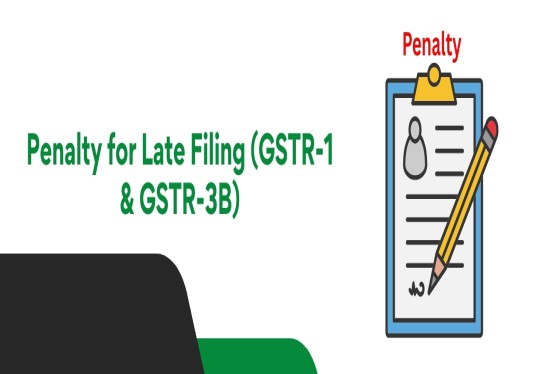












_of_GST_Act_learn_crop10_thumb.jpg)










_Under_GST_learn_crop10_thumb.jpg)









_crop10_thumb.jpg)


_crop10_thumb.jpg)






_learn_crop10_thumb.jpg)






















_of_the_Income_Tax_Act_learn_crop10_thumb.jpg)



_learn_crop10_thumb.jpg)






_learn_crop10_thumb.jpg)






_crop10_thumb.jpg)























_learn_crop10_thumb.jpg)



_of_the_Income_Tax_Act_learn_crop10_thumb.jpg)


_Of_Income_Tax_Act_learn_crop10_thumb.jpg)








_learn_crop10_thumb.jpg)








_learn_crop10_thumb.jpg)
_crop10_thumb.jpg)

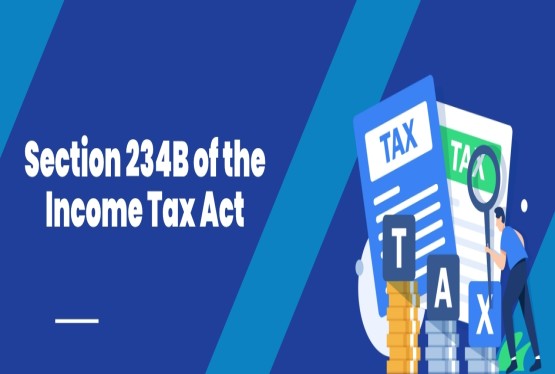




















_learn_crop10_thumb.jpg)
_for_Import_and_Export_learn_crop10_thumb.jpg)
















